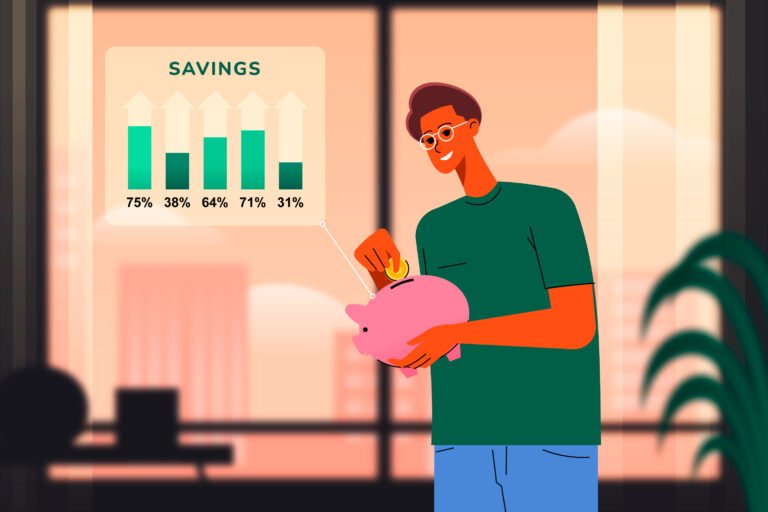nthly
1. 💰 Lump Sum vs. SIP: Which Is Better for Wealth Growth?
✅ Understanding the Basics of Each Strategy
Before comparing returns, it’s important to understand how each strategy works:
- Lump Sum Investment: You invest a large amount of money all at once. For example, investing ₹5 lakhs today in a mutual fund or stock portfolio. This strategy aims to maximize compounding from day one.
- SIP (Systematic Investment Plan): You invest a fixed amount regularly—typically monthly. For example, investing ₹10,000 per month for the next 5 years. This builds wealth steadily over time while spreading risk.
Both strategies have the same goal: grow your wealth. But the path, psychology, and results can differ significantly based on timing, market conditions, and personal discipline.

🏦 When You Have a Large Amount to Invest
If you’ve received a bonus, inheritance, or profit from selling an asset, a lump sum investment can offer superior returns—if the market performs well after you invest. Why?
- Longer Time in the Market = More Compounding
Investing early means your money has more time to grow, earning returns on returns. - Market Upside Exposure
In a rising market, a lump sum captures more upside compared to smaller, delayed investments.
But there’s a catch: if markets fall shortly after the lump sum investment, you face higher short-term losses. This is why lump sum investing is best when:
- The market outlook is positive or stable
- You have a long investment horizon (5–10+ years)
- You can handle short-term volatility without panic selling
📅 When You’re Building Wealth Gradually
Not everyone has a large amount lying around. That’s where SIPs shine:
- Rupee Cost Averaging: You buy more units when the market is low and fewer when it’s high, which can lower your average cost over time.
- Disciplined Wealth Building: SIPs align with monthly income, making it easier for salaried individuals to invest consistently.
- Lower Emotional Stress: Since you’re not betting big all at once, market volatility doesn’t hurt as much emotionally.
SIPs are ideal for:
- First-time or risk-averse investors
- People without a large initial capital
- Anyone who prefers automation and consistency
2. 📊 How Compounding Works in Each Approach
Compound interest is the secret weapon of wealth building. It’s the concept of earning returns not just on your original investment, but also on the returns you’ve already earned. The earlier your money starts compounding, the more powerful the effect over time.
Let’s see how compounding plays out in lump sum vs. SIP investments.
⏳ The Time Factor in Lump Sum Investing
When you invest a lump sum, your entire amount begins compounding immediately. The full capital is at work from day one.
- Example: If you invest ₹10 lakhs at 12% annual returns for 10 years, the amount grows to ₹31.06 lakhs.
- The longer the time horizon, the more dramatic the compounding effect.
- At 15 years: ₹10 lakhs becomes ₹54.18 lakhs
- At 20 years: It becomes ₹96.46 lakhs
Bottom line: The earlier you invest a lump sum, the more time it has to snowball.
📈 How Monthly Contributions Add Up
With SIPs, your capital enters the market gradually. So, only a portion of your total investment benefits from long-term compounding.
- For instance, if you invest ₹25,000 per month for 10 years at 12% annual return, your total contribution is ₹30 lakhs.
- The final value would be ₹58.92 lakhs—still impressive, but different from lump sum investing.
Here’s why SIPs grow slower early on:
- In year one, only ₹25K is working in month one.
- More capital comes in each month—but it hasn’t had as much time to compound.
- The growth curve gets steeper in later years, as the compounding builds on the accumulated corpus.
Advantage: SIPs reduce market timing risk and can still build substantial wealth over time.
🧮 Case Study: ₹10 Lakhs in Lump Sum vs. ₹25K per Month
Let’s compare two investors with the same total investment:
| Investor A | Investor B |
| ₹10 lakhs lump sum in Year 1 | ₹25,000 per month for 40 months |
| 12% annual return | 12% annual return |
| Investment Duration: 10 years | Investment Duration: 10 years |
| Maturity Value: ₹31.06 lakhs | Maturity Value: ₹26.06 lakhs |
🔍 Analysis:
- Investor A earns ₹21.06 lakhs in returns.
- Investor B earns ₹11.06 lakhs, because money entered the market slowly.
- But SIP wins if the market crashes early and rises later—because it buys more units at lower prices.
3. 📉 Risk vs. Reward: Which Strategy Handles Volatility Better?
Markets are unpredictable. Prices go up, down, and sideways. Your investment strategy should not only focus on returns—but also on how well it handles market turbulence.
Let’s compare how lump sum and SIP investments perform when the ride gets bumpy.
⚠️ Lump Sum: High Risk, High Reward
When you invest a lump sum, your entire capital is exposed to the market from day one.
- If the market rises sharply, you benefit from massive gains early.
- But if it crashes right after you invest, your entire capital takes the hit.
📉 Example:
You invest ₹10 lakhs in a mutual fund, and the market drops 20% in the next month. You now have ₹8 lakhs—a loss of ₹2 lakhs in 30 days. It may recover over time, but emotionally, that hit is tough to digest.
✅ Ideal only when:
- You’re confident about market timing
- You have a long-term horizon
- You can stay calm during deep market corrections
🌊 SIPs: Smoother Ride Through Market Ups and Downs
SIPs are designed to minimize emotional stress and manage risk.
- You’re not putting all your money in at once
- Even if the market falls, your next SIP buys units at a lower price
- You stay invested during all phases—bull, bear, and sideways
This approach doesn’t eliminate risk—but it spreads it out over time, lowering the impact of short-term volatility.
📉 Example:
In a volatile market, SIPs help you average out the cost, so you’re not stuck with high-priced investments bought at the peak.
🔄 Rupee Cost Averaging: SIP’s Hidden Advantage
The real strength of SIPs lies in rupee cost averaging—a smart, automatic way to buy low and grow consistently.
- When markets fall, your fixed monthly investment buys more units
- When markets rise, your earlier units increase in value
- Over time, this balances out your entry cost and boosts long-term returns
🎯 Result: You don’t need to “time the market” because your SIP adapts to it.
📌 Bonus: Rupee cost averaging is especially helpful in volatile or sideways markets, where lump sum investments may underperform or feel stagnant.
4. 🧠 Psychology of Investing: What Most People Get Wrong
Investing isn’t just about math and returns—it’s also a mental game. The right strategy isn’t always the one that performs best on paper, but the one you can stick with in the real world.
Let’s look at how lump sum and SIPs impact investor behavior—and where people often go wrong.
😨 Fear of Market Timing with Lump Sum
Lump sum investing often triggers analysis paralysis:
- “What if the market crashes tomorrow?”
- “Should I wait for a better entry point?”
- “Maybe next month is safer…”
This fear causes many people to delay investing, waiting for the “perfect time”—which often never comes. Even worse, investing at the wrong time and watching your money drop fast can lead to:
- Panic selling at a loss
- Loss of trust in the market
- Avoiding future investments altogether
🧠 Lump sum investing requires emotional resilience, patience, and a strong belief in long-term growth. Without that, it can become a source of stress rather than wealth.
🔄 SIPs and the Discipline of Consistency
SIPs help overcome emotional traps by automating the process. You don’t have to think, time the market, or make constant decisions.
- You invest, no matter what the market is doing
- You stay consistent—even when headlines scream “crash”
- You focus on the long-term journey, not daily price swings
This consistency builds investment discipline, which is often more important than chasing the highest returns.
💡 Many successful investors say:
“The best plan is the one you can stick to.”
SIPs make it easier for average investors to do just that.
🚫 Emotional Traps and How to Avoid Them
Here’s how both strategies can affect investor psychology:
| Emotional Trap | Lump Sum Risk | SIP Defense |
| Market crashes right after investing | High anxiety | Low impact (you’ll buy cheaper next month) |
| Overthinking and delay | Common | SIPs remove timing decisions |
| Panic during volatility | Likely | SIPs smoothen the ride |
| FOMO during bull runs | May switch funds impulsively | SIP keeps you grounded |
🧠 Key takeaway: Choose a strategy that matches your personality, not just your portfolio goals.
5. 🏦 Taxation and Liquidity: Hidden Factors That Matter
While returns and risk often steal the spotlight, taxation and liquidity play a silent but crucial role in how much wealth you actually keep—and how easily you can access it when needed. Understanding these hidden factors can help you avoid surprises down the road.
💼 Tax Treatment of Lump Sum vs. SIPs
Mutual funds, stocks, and other capital market instruments are subject to capital gains tax. But the way Lump Sum and SIPs are taxed differs slightly:
🧾 Lump Sum Taxation:
- Entire amount is considered to have one purchase date (the day you invested).
- Gains are taxed based on the duration you hold your investment:
- < 1 year (Equity): Short-Term Capital Gains (STCG) – taxed at 15%
- > 1 year (Equity): Long-Term Capital Gains (LTCG) – taxed at 10% on gains exceeding ₹1 lakh/year
📅 SIP Taxation:
- Each SIP installment is treated as a separate investment with its own “purchase date.”
- So, each monthly contribution must complete 1 year to qualify for LTCG benefits.
- This means even if you’ve been investing for 3 years, your most recent SIPs may still be liable for STCG tax.
💡 Pro Tip: Always check the age of each SIP before redeeming, to avoid paying unnecessary short-term taxes.
🔒 Lock-ins, Withdrawals & Emergency Access
How easily you can access your money—especially in emergencies—varies by investment type and method:
🏦 Lump Sum:
- Can be partially or fully withdrawn at any time (unless locked in, like ELSS or FD).
- Liquidity is high, but withdrawing too early might cut into gains or trigger taxes.
📅 SIPs:
- Also redeemable anytime—but only the matured units (older than 1 year) are tax-efficient.
- SIPs in ELSS funds (Equity Linked Saving Scheme) come with a 3-year lock-in per installment.
💬 Example: SIP in ELSS started Jan 2022 → Only the Jan 2022 units are free to withdraw in Jan 2025.
The Feb 2022 SIP matures in Feb 2025, and so on.
📌 Tip: Keep an emergency fund separate from your investments so you don’t need to make premature redemptions.
📊 Tax-Efficient Strategy: Can You Combine Both?
Yes—you can. In fact, a hybrid approach can give you the best of both worlds:
🧠 Strategy:
- Start with a lump sum to get your compounding engine running
- Follow it up with SIPs to stay consistent, manage volatility, and benefit from rupee cost averaging
- Prioritize tax-saving funds (like ELSS) if you’re looking for deductions under Section 80C
- Use goal-based buckets: long-term money can be locked; short-term needs stay liquid
💡 Example:
- Invest ₹5 lakhs lump sum in a diversified equity fund (long-term wealth goal)
- Set a ₹10K/month SIP for future planning or retirement
- Use ELSS SIPs if you also want to save on income tax
6. 🔎 Real-World Scenarios: Which Strategy Wins?
Theory is useful—but nothing beats a real-world simulation. Let’s compare lump sum vs. SIP under three different market conditions. Same total investment, same duration—but dramatically different outcomes depending on when and how the money was deployed.
Assumptions for all scenarios:
- Investment amount: ₹10 lakhs (lump sum) vs. ₹25,000/month SIP
- Duration: 40 months (3 years 4 months)
- Total investment in both: ₹10 lakhs
- Return rate changes based on market movement pattern
📈 Scenario 1: Market Rises After Investment
The market steadily grows 12% per year from the start.
Lump Sum:
- ₹10 lakhs invested on Day 1 grows with full compounding.
- Final Value ≈ ₹13.66 lakhs
SIP:
- ₹25,000/month for 40 months.
- Final Value ≈ ₹12.20 lakhs
🟢 Winner: Lump Sum
Because the market rose consistently, getting all the money in early allowed compounding to work faster and harder.
📉 Scenario 2: Market Crashes Then Recovers
Market drops 30% in Year 1, recovers slowly over the next 2.5 years.
Lump Sum:
- ₹10 lakhs invested on Day 1 immediately drops to ₹7 lakhs.
- Even with recovery, final value ≈ ₹10.2 lakhs
(barely breaks even after years of recovery)
SIP:
- Keeps investing as prices fall, buying more units cheaply.
- As the market recovers, these low-cost units grow.
- Final Value ≈ ₹12 lakhs
🟢 Winner: SIP
Rupee cost averaging worked beautifully, turning market volatility into an advantage.
📊 Scenario 3: Flat Market for 5 Years
Market moves sideways with little to no real growth (0–2% annually).
Lump Sum:
- ₹10 lakhs barely grows, ending around ₹10.8 lakhs after 5 years.
SIP:
- Keeps buying in a stagnant market, accumulating more units.
- Final Value ≈ ₹11.2 lakhs
🟢 Winner: SIP
While neither strategy delivers high returns, SIP comes out slightly ahead due to cost averaging in a range-bound market.
🔁 Key Takeaways:
| Market Condition | Better Strategy |
| Rising Market | ✅ Lump Sum |
| Falling-Then-Rising Market | ✅ SIP |
| Sideways/Flat Market | ✅ SIP |
🚨 Important: These outcomes highlight that timing matters for lump sum, but consistency matters for SIPs.
7. ✅ The Bottom Line: What Should You Do?
There’s no one-size-fits-all answer. Both lump sum and SIP strategies have the potential to grow wealth—but choosing the right one depends on your financial situation, mindset, and goals.
Let’s break it down so you can make a confident decision.
❓ Key Questions to Ask Yourself
Before picking a strategy, ask:
- 💼 Do I have a large sum ready to invest now?
If yes, lump sum may be more rewarding—if you’re comfortable with market timing. - 📅 Is my income stable month to month?
Then SIPs can automate savings and reduce decision fatigue. - 🧠 Can I handle short-term losses without panic?
Lump sum investing requires a strong stomach during volatility. - 🎯 Am I investing for the long term (5+ years)?
Both methods work better the longer you stay invested. - 🧩 Is tax planning important right now?
ELSS via SIPs could give you Section 80C deductions and long-term wealth.
💡 Best Strategy Based on Your Income & Risk Appetite
| Profile | Recommended Strategy |
| Salaried, stable monthly income | ✅ SIP (consistent, low-stress) |
| Self-employed with large windfalls | ✅ Lump Sum (if market-timing is favorable) |
| Conservative, avoids big risks | ✅ SIP (reduces volatility impact) |
| Aggressive, long-term outlook | ✅ Lump Sum (maximize compounding) |
Tip: You don’t need to be an expert investor. You just need to be a consistent one.
🔄 Why a Hybrid Approach Might Be the Smartest
In real life, most successful investors combine both strategies:
- 📌 Invest a lump sum when you receive bonuses, inheritances, or asset sale profits
- 💸 Continue monthly SIPs to build wealth steadily and reduce market timing stress
- 🔀 This way, you balance growth potential with risk management
Example Hybrid Plan:
- Lump sum ₹5 lakhs in a diversified equity mutual fund today
- SIP ₹15,000/month in 2–3 funds for the next 5–10 years
- Add ELSS SIPs if you want to reduce taxable income
🧠 You don’t need to choose only one—you just need to start.
🚀 Conclusion: Start Smart, Stay Consistent, Watch Your Wealth Grow
Choosing between lump sum and SIP investing isn’t about finding a “perfect” strategy—it’s about what fits your financial situation, risk tolerance, and mindset.
- Lump sum investing can supercharge your wealth if you have the capital and confidence to stay invested through market ups and downs.
- SIPs offer a disciplined, lower-risk path to build wealth gradually while smoothing out volatility through rupee cost averaging.
- Combining both lets you harness the power of immediate compounding and consistent investing over time.
Remember, the best investment is the one you start today and stay committed to for the long haul.
Ready to grow your wealth? Whether you start with a lump sum or SIP, your future self will thank you for the discipline and foresight.
Read Also: How Compound Interest Quietly Builds Millionaires






